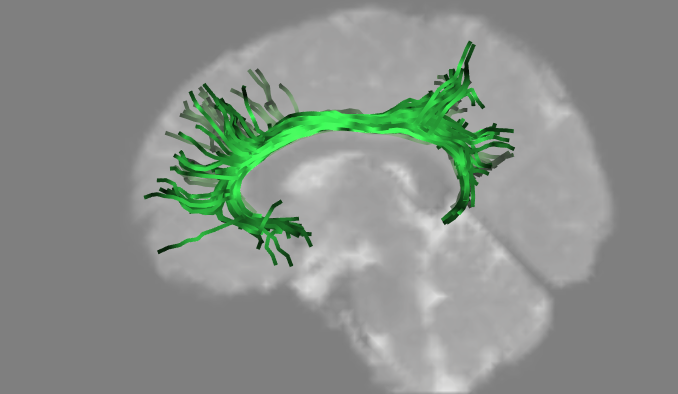Hi everyone!
I am reaching out with a quick question regarding my outputs from pyAFQ for the cingulum bundle.

I attached what my outputs are mostly looking like above. They look very nice! However, the long cingulum “tail” does not seem to show up in any of my subjects. I tried running a novel tract (the fornix) through AFQ and had a lot of trouble because of how small and curvy it was, so not sure if this is a similar issue because of the curves.
However, my subjects are 4-7 years old, and I do not believe the cingulum is fully developed at that point, so this may just be how the cingulum looks for my subjects in particular because they’re so so young, and maybe that part go the CGC has not developed yet.
Just thought I’d reach out to see if anyone has had a similar output for this tract or had any insight into this! Thanks!
Hi Julia,
This is expected, but is not a developmental issue in your subjects! The tract that is found by pyAFQ is what we call “the cingulate cingulum” (hence “CGC”) to differentiate it from “the hippocampal cingulum”. See also this figure. However, there is a template that can be used to find the hippocampal cingulum that is available together with all the other pyAFQ templates and are referred to as “HCC”. This template includes both waypoint ROIs and a probabilistic map. You can try to use these (along the lines of this example, and look also into how the default bundle dictionary is defined here), but note that we decided not to use this as a default bundle pretty early on in the development of pyAFQ based on the experience that HCC is often hard to delineate, especially in low SNR or low (angular/spatial) resolution data, for reasons similar to what you described for the fornix. So, worth trying, but also worth doing careful QC. Hope that helps!
Hi Dr. Rokem,
Thank you so incredibly much for this response and for sharing all of this information and these resources, I can’t put into words how much I appreciate it! I totally understand. I suspected that could have been the reason after my experience with the fornix, so this all completely makes sense!
I will likely give this a try using these resources! If I do, I am happy to share my outputs as well : )
Thank you again for all of your insight and everything!
